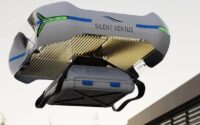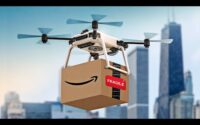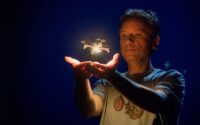Balancing Admissibility, Privacy Concerns, and Reliability
Drone footage must undergo authentication to establish reliability and integrity.Privacy concerns arise when using drone footage as evidence.The quality and adherence to regulations impact the admissibility of drone footage in court.
The Use of Drone Footage as Evidence in Court Proceedings
One of the primary challenges surrounding the use of drone footage as evidence is the authentication process. It is crucial to establish the reliability and integrity of the footage to ensure its accuracy. This can be done through expert analysis, including verifying the time, date, and location of the recording, as well as examining the chain of custody.
Another concern is privacy rights. Drone footage often captures images and recordings of individuals without their consent, raising questions about the violation of privacy. Courts must carefully balance the probative value of the evidence against the potential infringement of privacy rights when determining its admissibility.
Additionally, the quality and clarity of drone footage can affect its admissibility. Poor visibility, distortions, or tampering may raise doubts about the accuracy and reliability of the evidence. Courts may require expert testimony to explain the technical aspects of drone operation and the reliability of the footage presented.
Furthermore, the purpose for which the drone footage was obtained is essential. If the footage was obtained illegally or in violation of regulations, it may be deemed inadmissible in court. Proper adherence to local laws and regulations governing drone use is crucial to ensure the validity of the evidence.
Despite these challenges, drone footage can provide valuable evidence in various types of court proceedings. It can be particularly useful in cases involving accident reconstruction, property disputes, environmental violations, or criminal activities. The aerial perspective offered by drone footage can provide unique insights and enhance the understanding of events.
To enhance the admissibility of drone footage, some jurisdictions have implemented specific guidelines and requirements. These may include licensing requirements for drone operators, protocols for data storage and handling, and standards for image resolution and clarity. Such measures aim to ensure the reliability and integrity of the evidence presented.
The Admissibility of Drone Footage as Evidence
Drone footage is increasingly being used as evidence in courts around the world. Its potential to provide unique and compelling visual documentation has raised questions about its admissibility in legal proceedings.
Firstly, drone footage can offer valuable perspectives and details that are otherwise difficult to capture. This includes aerial views, panoramic shots, and close-ups of specific areas. Such footage can provide crucial evidence in cases involving accidents, environmental violations, and criminal activities.
However, the admissibility of drone footage in court is subject to certain considerations. One key factor is the authenticity and integrity of the footage. It must be established that the footage has not been tampered with or manipulated in any way. This requires proper documentation of the drone’s flight path, the operator’s qualifications, and the equipment used.
Additionally, privacy concerns can arise when drone footage is used as evidence. Courts need to evaluate whether the recording violated any reasonable expectations of privacy. For example, if the footage was obtained without proper consent or in restricted airspace, its admissibility may be questioned.
Another aspect to consider is the relevance of the drone footage to the case at hand. Courts need to determine whether the footage is essential and directly linked to the issues being litigated. Irrelevant or tangential footage may not be admitted as evidence.
Moreover, the reliability and accuracy of the drone footage are crucial factors. Courts may assess the conditions under which the footage was captured, including weather conditions, lighting, and any potential distortions. Expert testimony may be necessary to explain and authenticate the footage’s accuracy.
Legal jurisdictions vary in their approaches to the admissibility of drone footage. Some jurisdictions have specific rules and guidelines in place, while others rely on the discretion of the presiding judge. It is essential for legal professionals and lawmakers to keep up with technological advancements and establish clear frameworks for the use of drone footage as evidence.
Benefits and Challenges of Drone Footage as Evidence
Drone footage as evidence presents numerous benefits and challenges in the courtroom. Let’s explore them:
Benefits:
- Enhanced Perspective: Drone footage offers a unique aerial view, providing an unparalleled perspective of the scene. This comprehensive viewpoint can reveal crucial details that might otherwise go unnoticed.
- Accurate Documentation: Drones capture high-resolution footage, ensuring accurate documentation of the crime scene or event. This visual evidence can help recreate the sequence of events and aid in investigations.
- Objective and Unbiased: Drone footage is objective, as it records events without human intervention or bias. This objectivity strengthens the credibility of the evidence and minimizes the potential for manipulation.
- Remote Access: Drones can access remote or hazardous areas that are difficult or dangerous for investigators. This capability allows for the collection of evidence from inaccessible locations, aiding in challenging cases.
- Time and Cost Efficiency: Utilizing drone footage can save time and resources compared to traditional methods, such as manned aerial surveillance or on-site investigations. It enables swift data collection and analysis.
Challenges:
- Authentication: Ensuring the authenticity and integrity of drone footage presents a significant challenge. Courts need to establish a robust chain of custody to verify that the footage has not been tampered with or manipulated.
- Privacy Concerns: Drone surveillance raises privacy concerns as it can capture footage beyond the intended crime scene. Striking a balance between gathering evidence and protecting individual privacy rights is crucial.
- Admissibility and Expertise: Courts must determine the admissibility of drone footage based on relevant laws and regulations. Additionally, legal professionals need to acquire technical expertise to interpret and present the footage effectively.
- Weather and Environmental Factors: Adverse weather conditions, such as strong winds or heavy rain, can affect the quality and reliability of drone footage. Environmental factors, like low light or obstructions, may also impact the footage’s usefulness.
- Public Perception and Jury Understanding: The use of drone footage as evidence might face resistance due to public perception or misconceptions. Ensuring that jurors comprehend the footage and its significance is crucial for fair judgments.
Legal Framework and Precedents
In many countries, the admissibility of evidence is subject to certain criteria, such as relevance, authenticity, reliability, and legality of obtaining the footage. Courts often assess whether the drone was operated within the boundaries of applicable laws and regulations. If the footage was obtained illegally or violated someone’s privacy, it may be excluded from the evidence.
Legal precedents play a crucial role in shaping the acceptance of drone footage as evidence. Courts rely on previous cases to establish guidelines and standards for evaluating its credibility. For instance, if a jurisdiction has previously admitted drone footage in a similar context, it may set a precedent for future cases.
The reliability of drone footage is another factor considered by the courts. They assess the qualifications and expertise of the person operating the drone, the quality of the equipment used, and the circumstances surrounding the recording. Any editing or manipulation of the footage could impact its admissibility.
To strengthen the admissibility of drone footage, parties may need to present additional supporting evidence, such as expert testimony or corroborating witnesses. This helps establish the accuracy and context of the footage, further bolstering its credibility.
The Future of Drone Footage in Court
Drone footage has emerged as a powerful tool in various fields, including law enforcement, journalism, and cinematography. Its ability to capture high-definition aerial views provides a unique perspective that can be valuable in legal proceedings. However, the use of drone footage as evidence in court raises important questions and considerations.
One of the primary concerns is the admissibility of drone footage as evidence. Courts typically require evidence to be relevant, authentic, and reliable. In the case of drone footage, its relevance would depend on whether it is directly connected to the matter at hand and can help establish or refute key facts. Authentication is another critical factor, as the footage must be verified to ensure its integrity and prevent tampering.
Moreover, the reliability of drone footage can be a subject of debate. Factors such as weather conditions, technical glitches, or human error can potentially affect the accuracy and quality of the footage. Courts may need to evaluate the qualifications of the drone operator and the equipment used to gather the footage to determine its reliability.
Additionally, privacy concerns may arise when using drone footage in court. The use of drones for surveillance purposes has sparked debates over privacy rights. Courts must consider whether the collection of drone footage violates individuals’ reasonable expectations of privacy and balance it against its potential evidentiary value.
Moreover, the versatility of drones allows for unique perspectives that traditional surveillance methods cannot provide. Aerial views can offer crucial evidence in cases involving accidents, property disputes, or environmental issues. Drone footage can reconstruct events, map crime scenes, or provide context that would otherwise be difficult to obtain.



